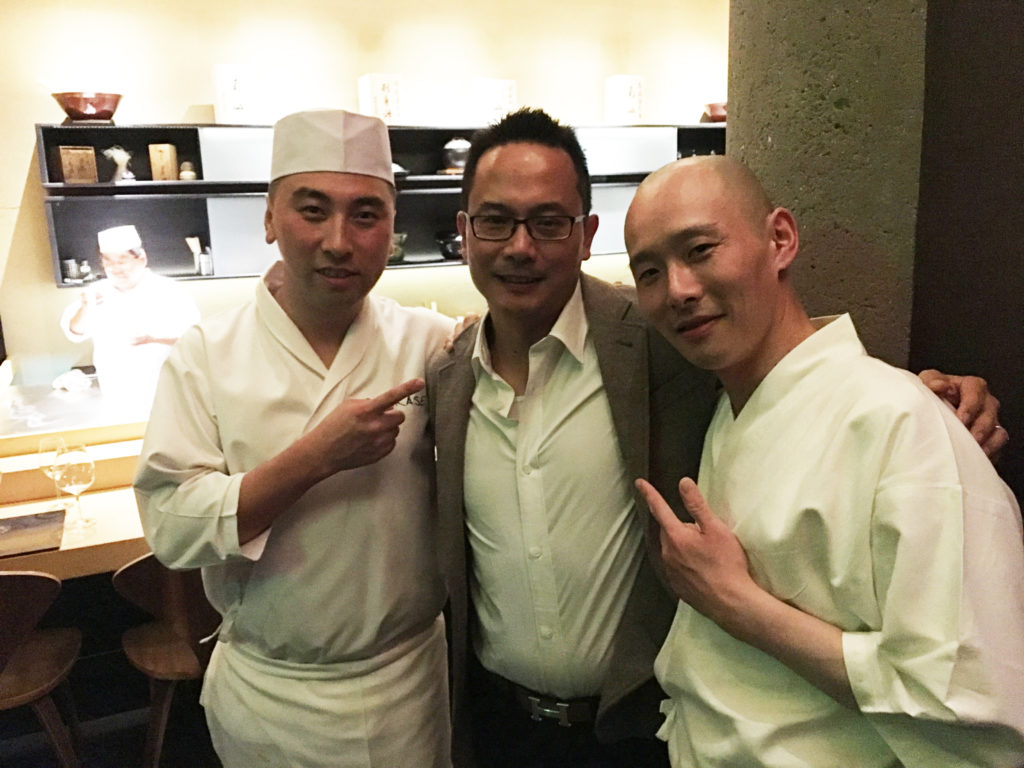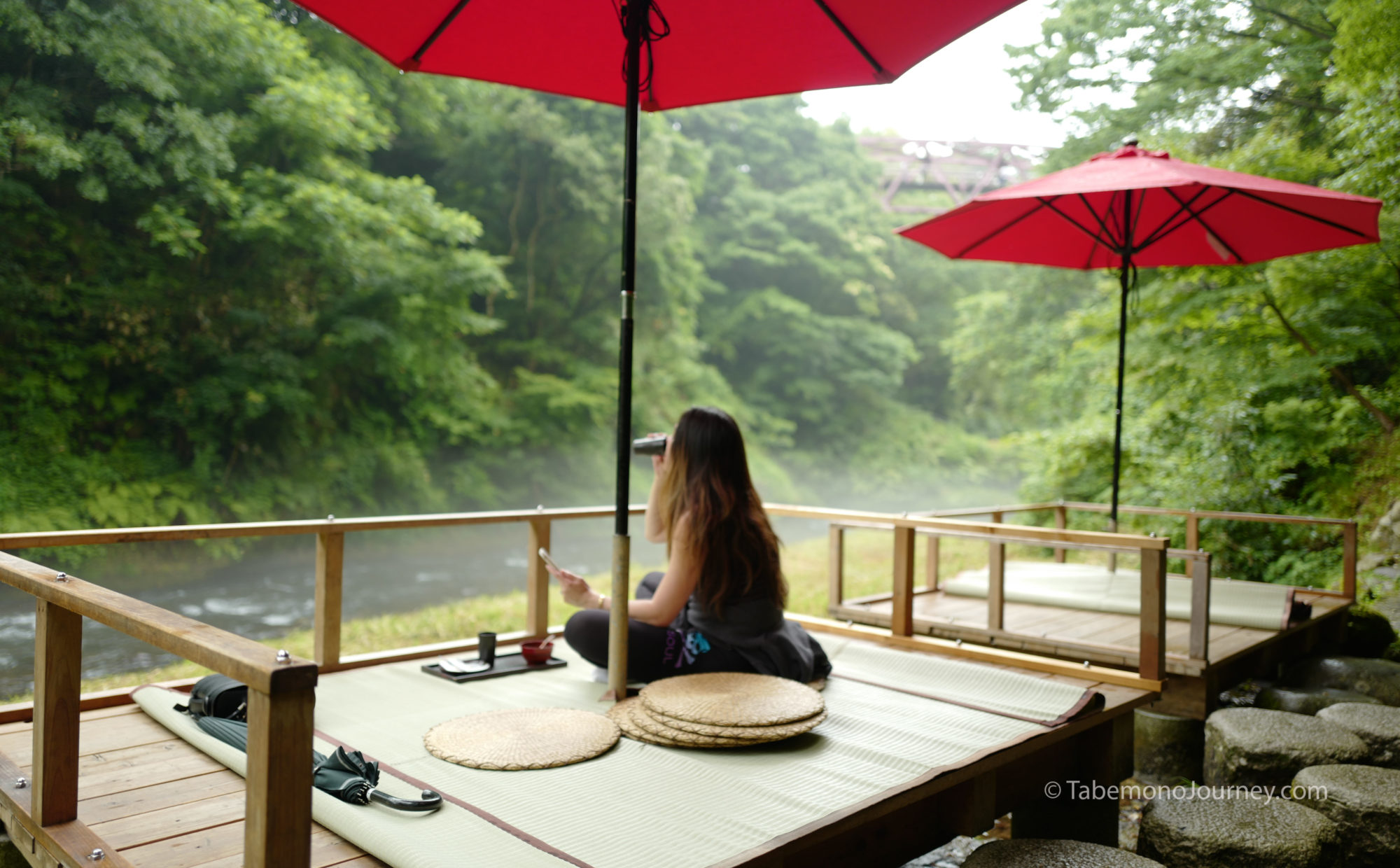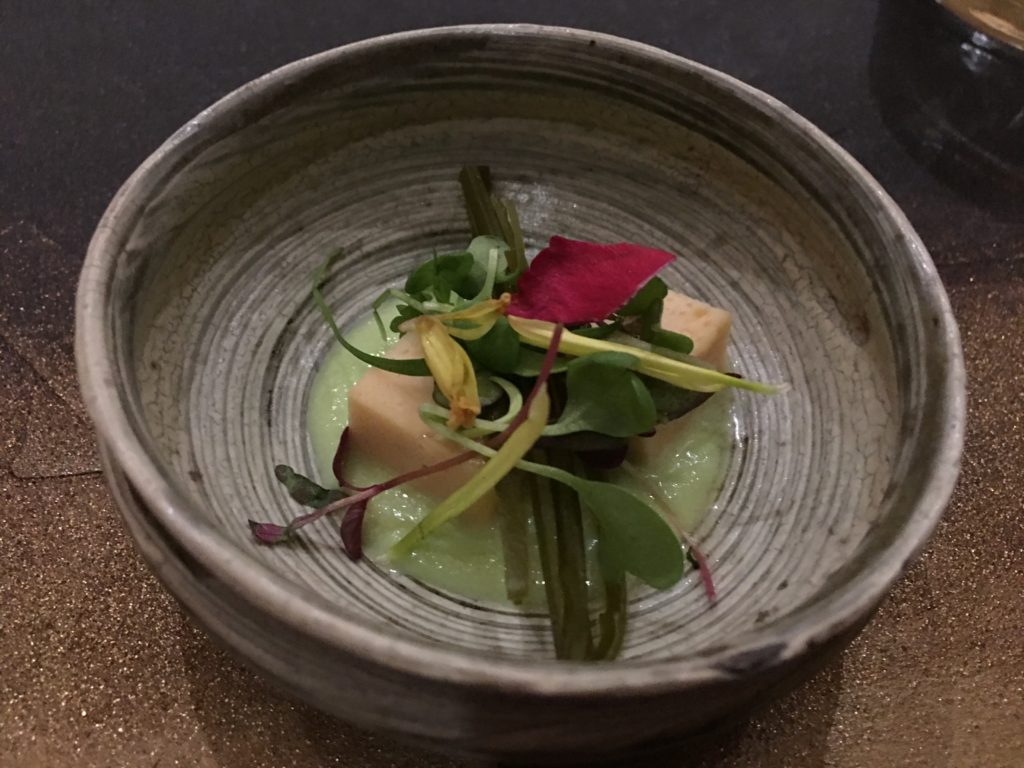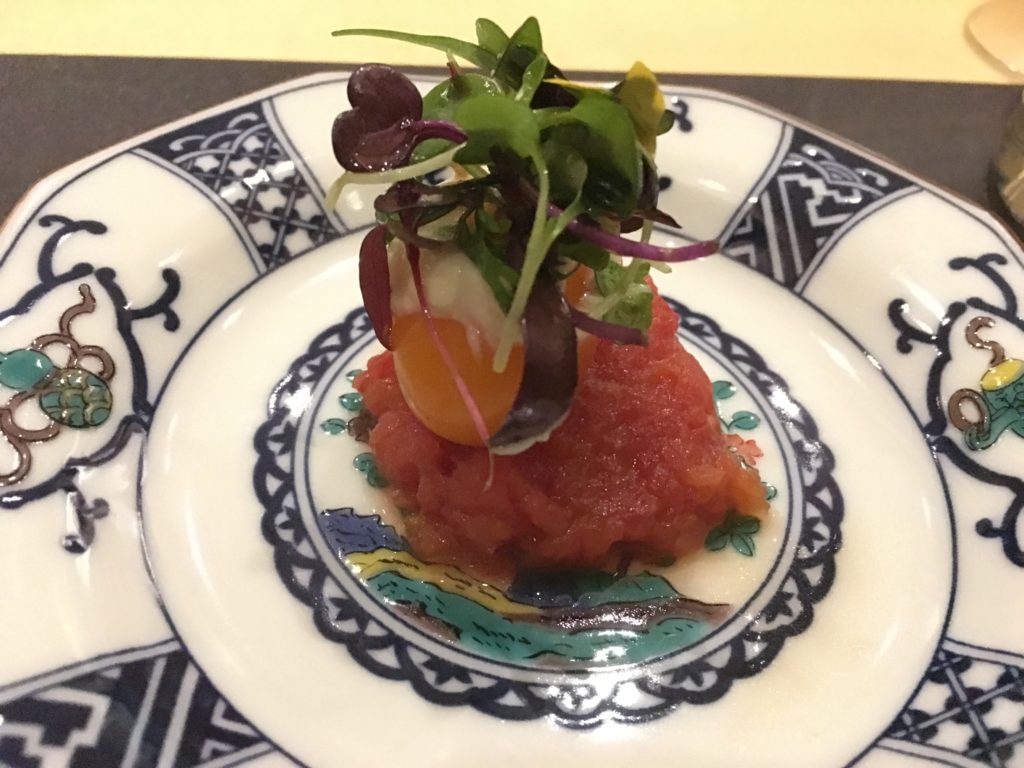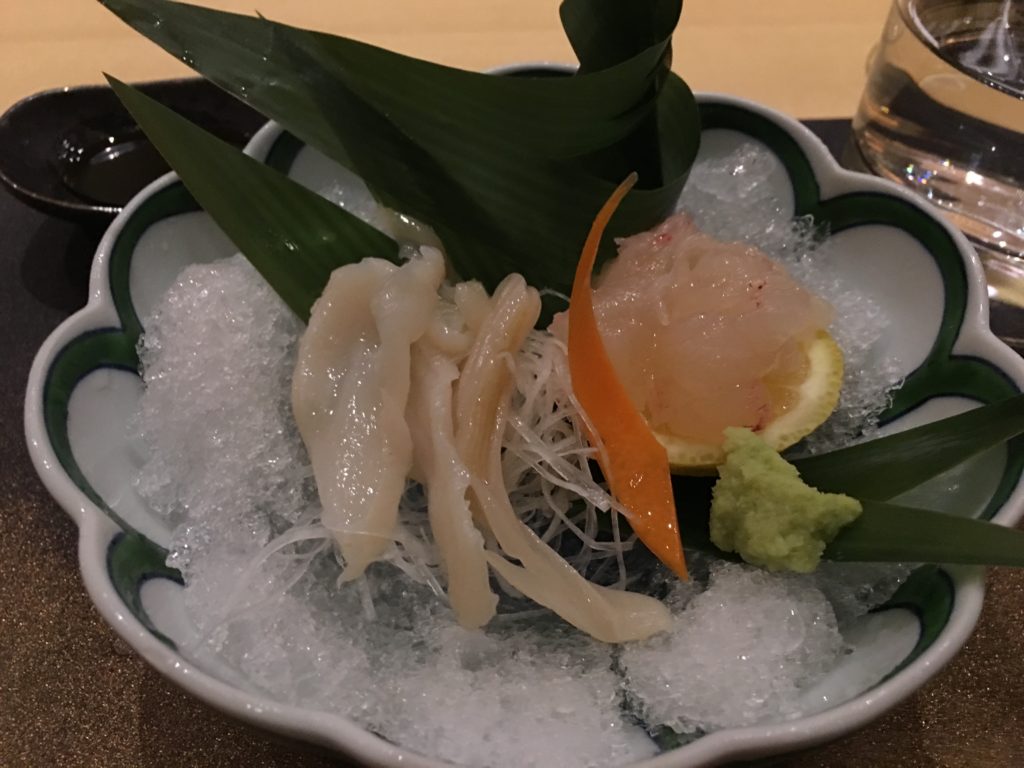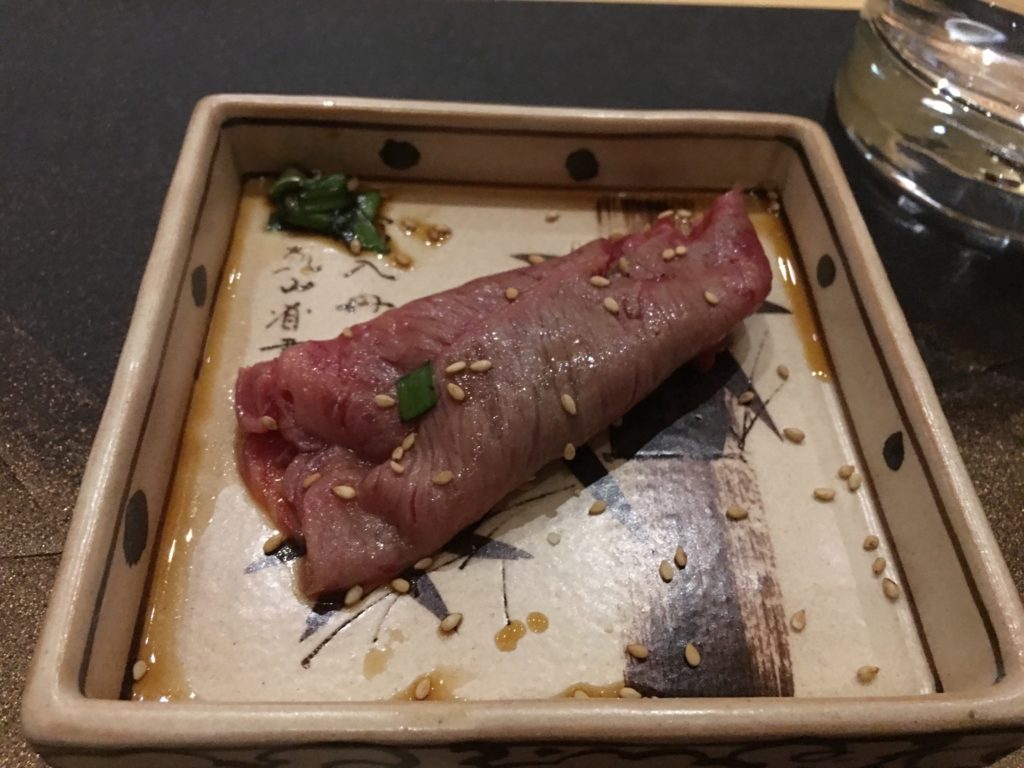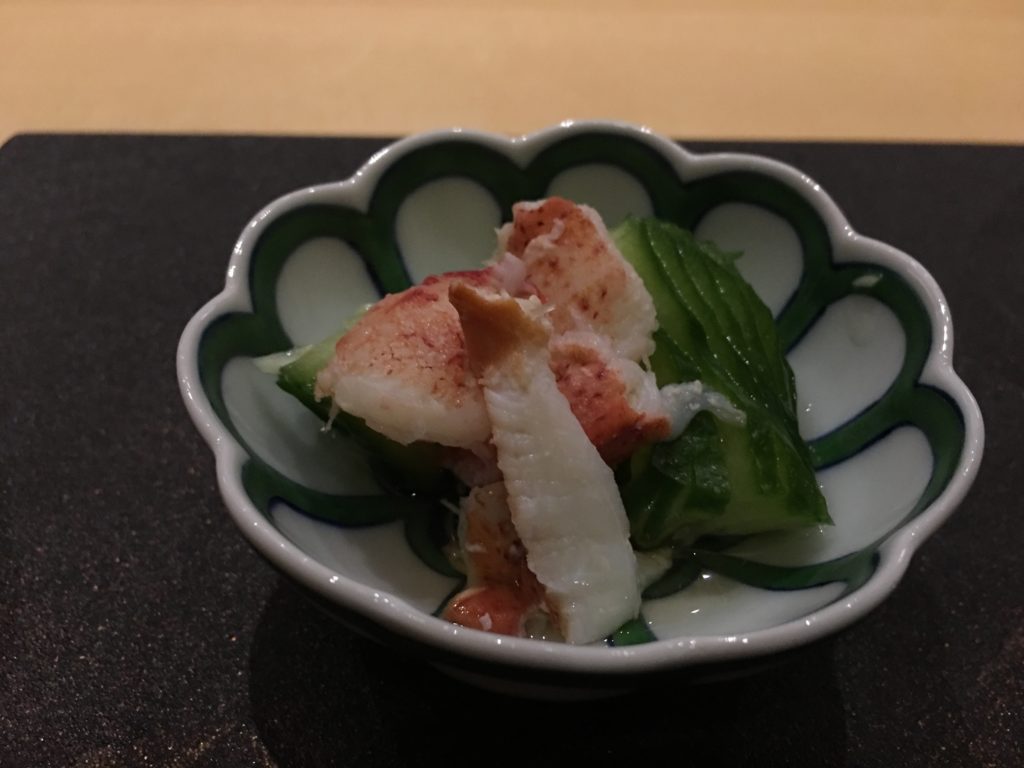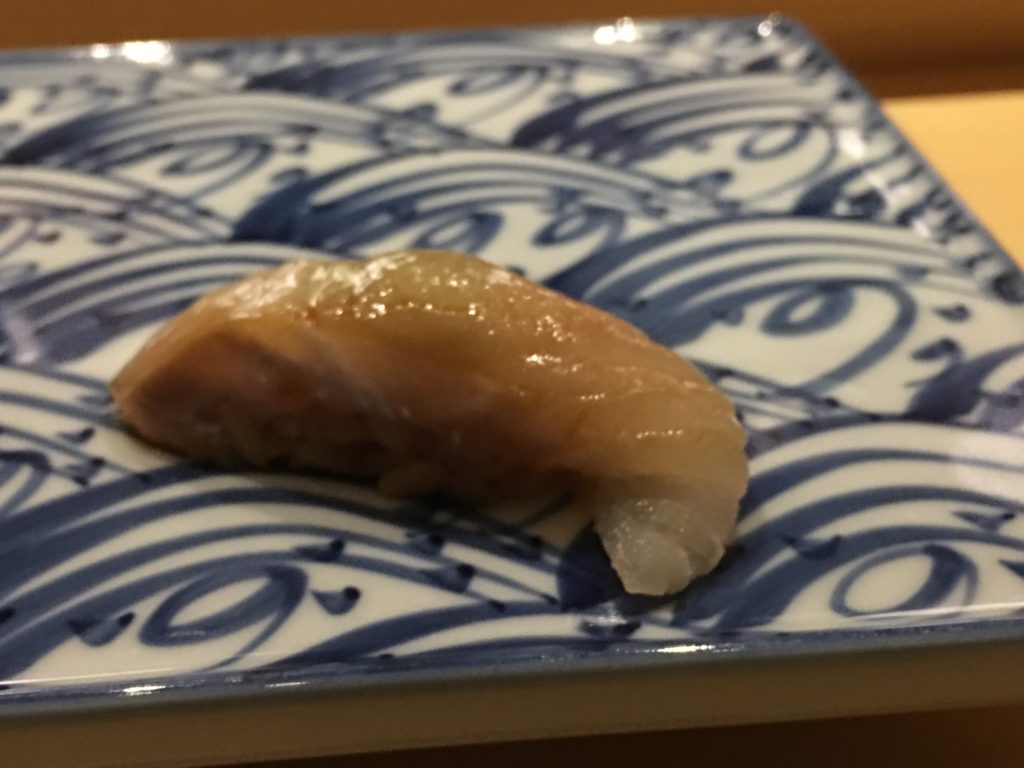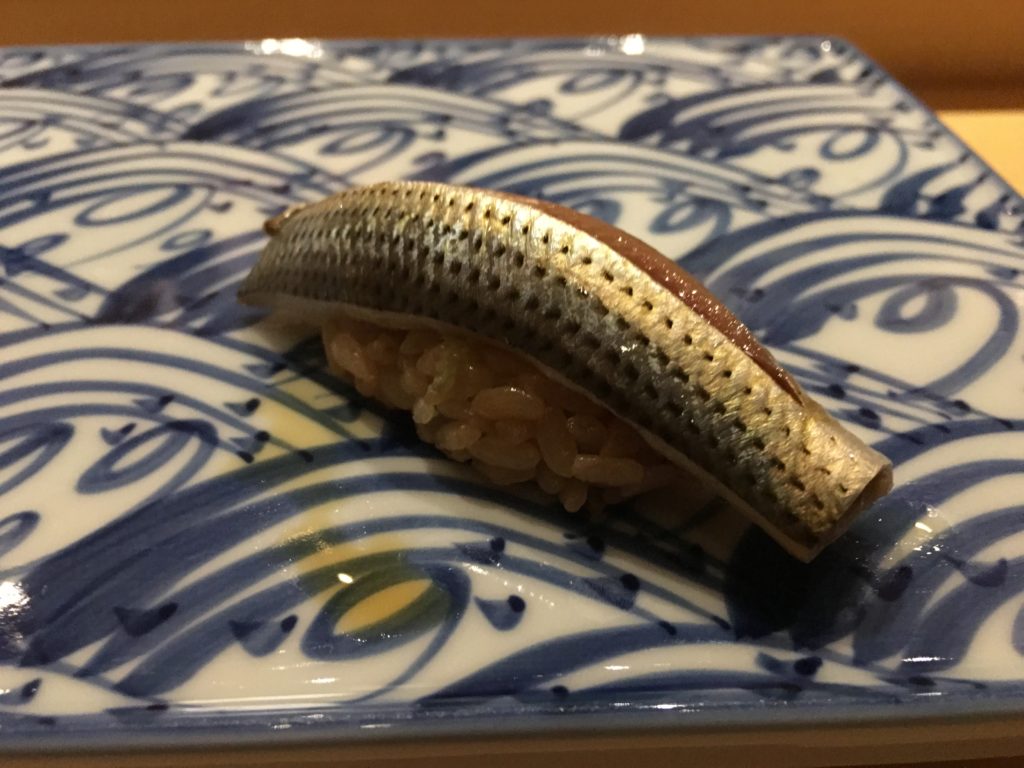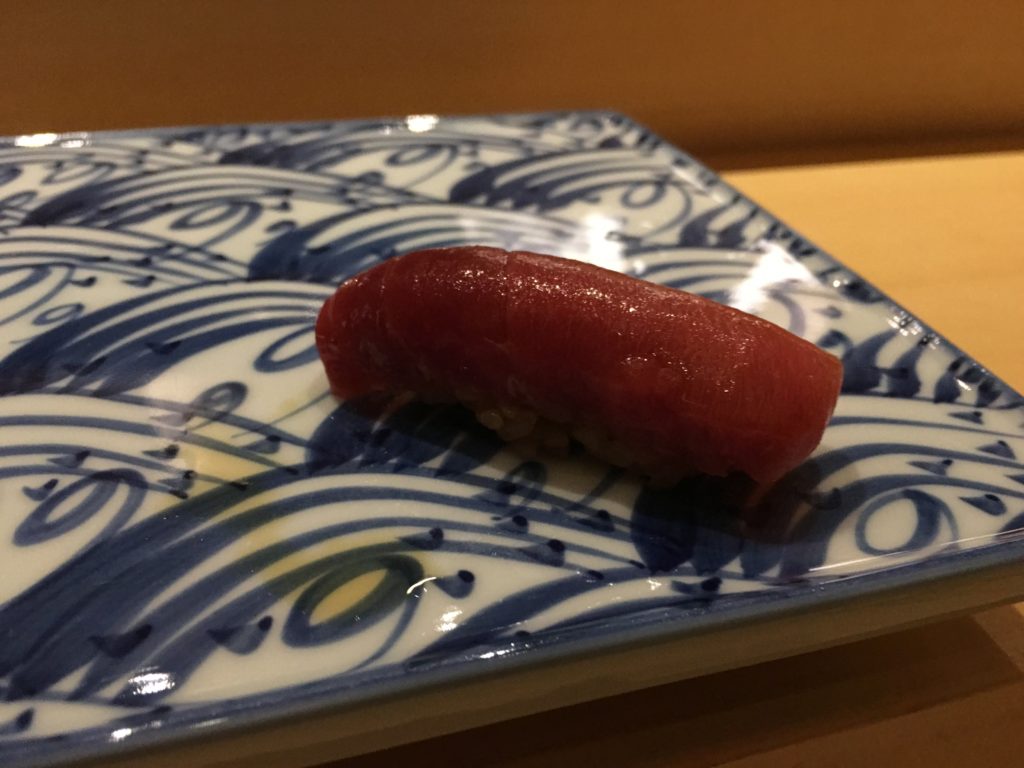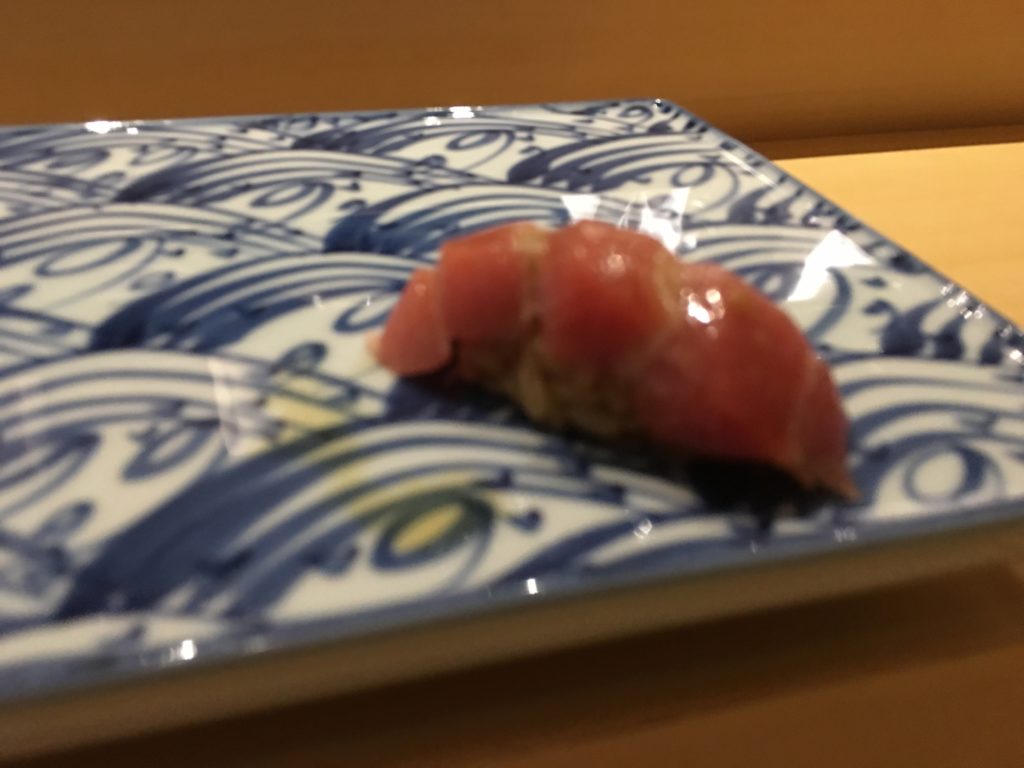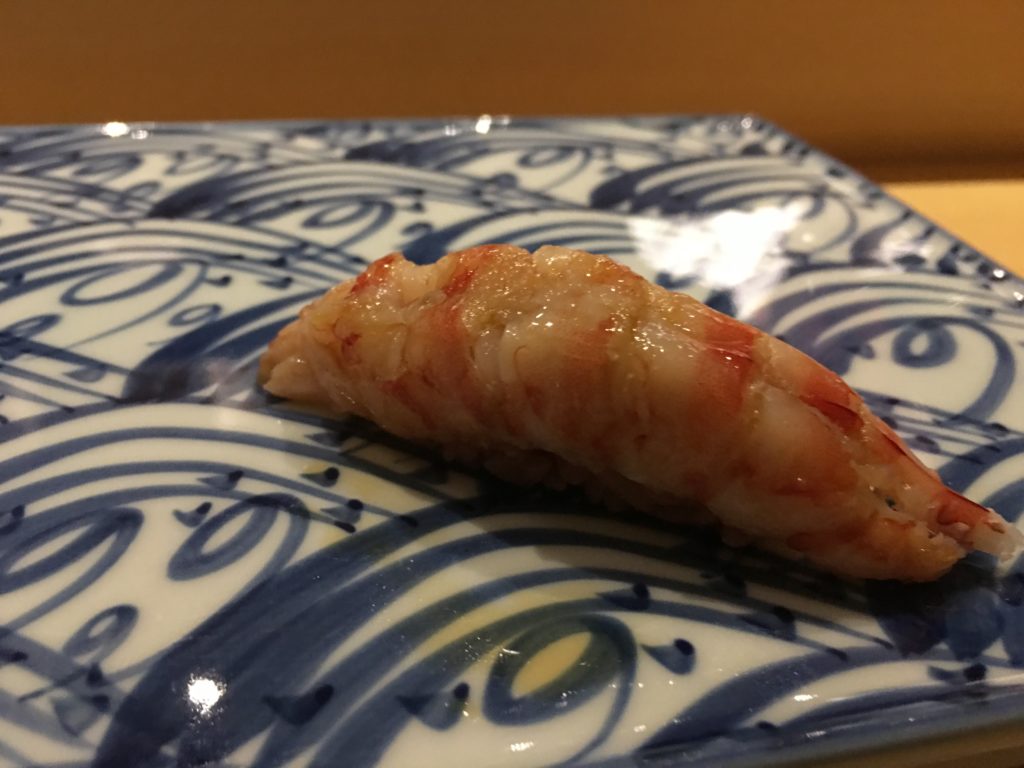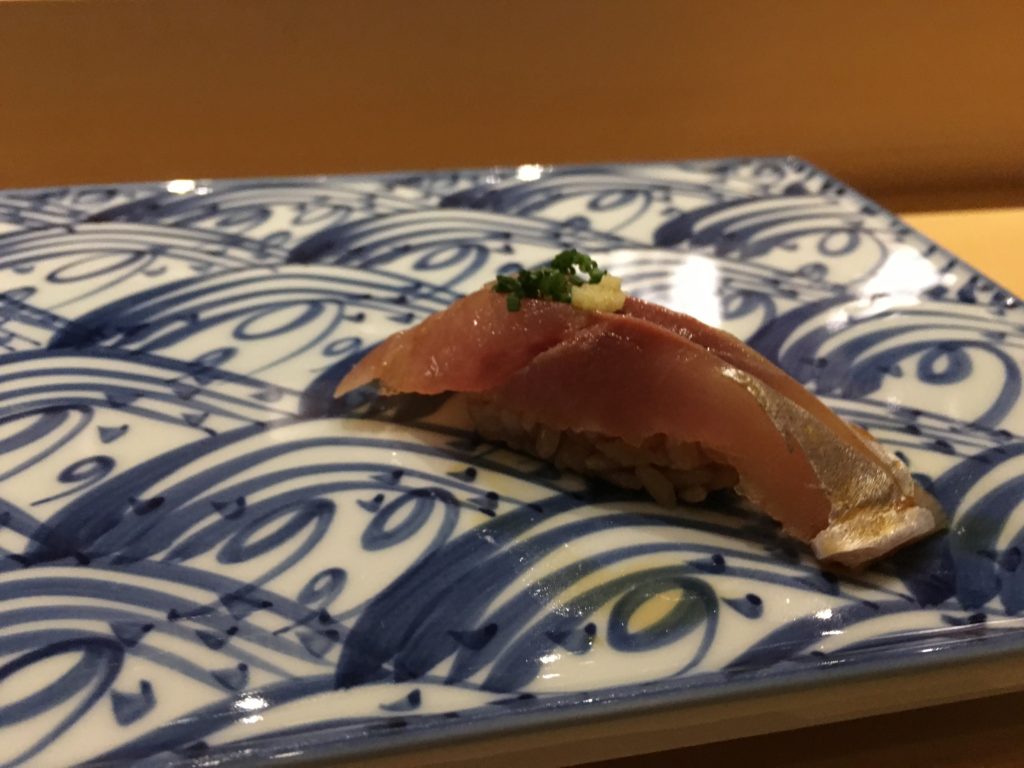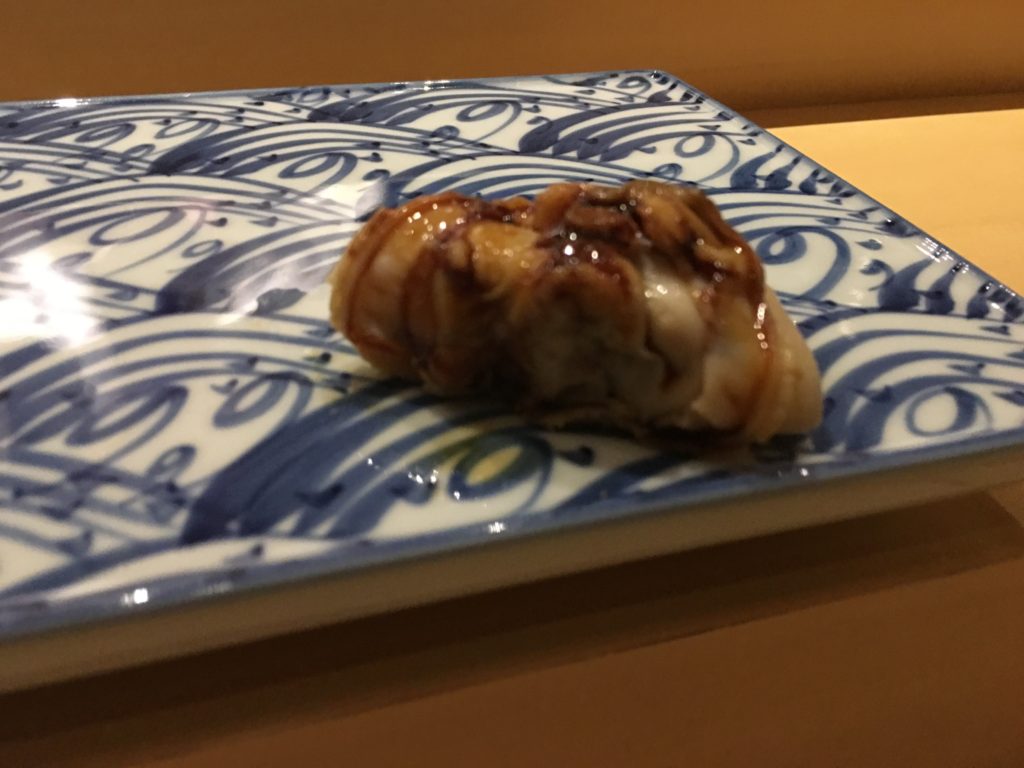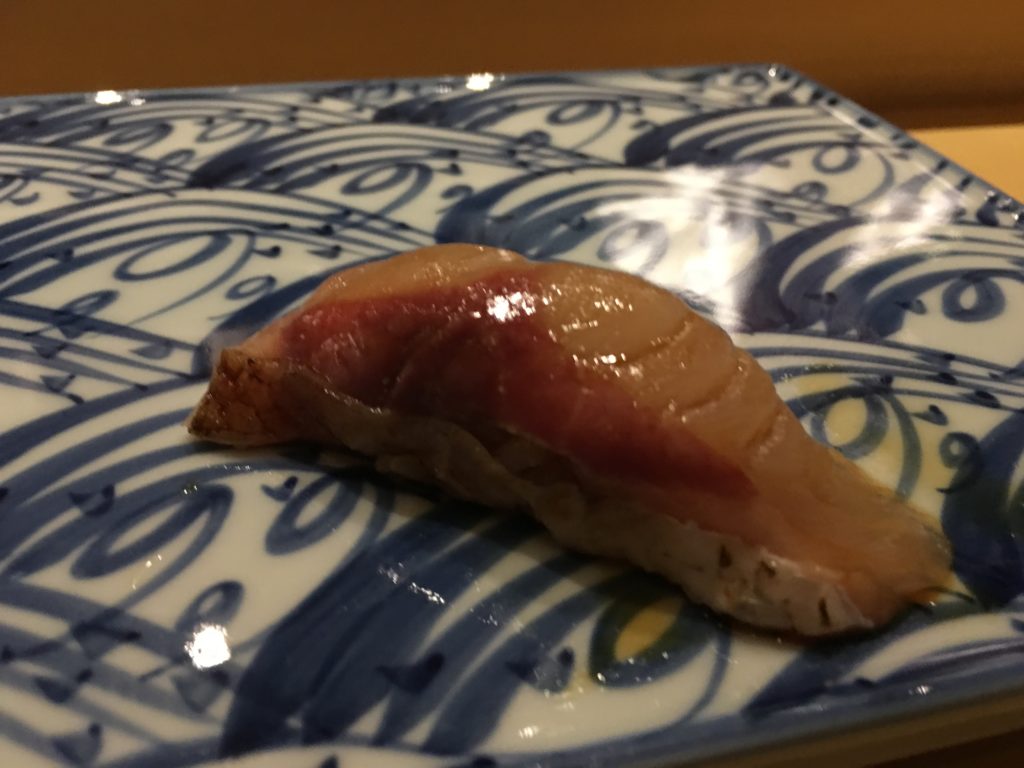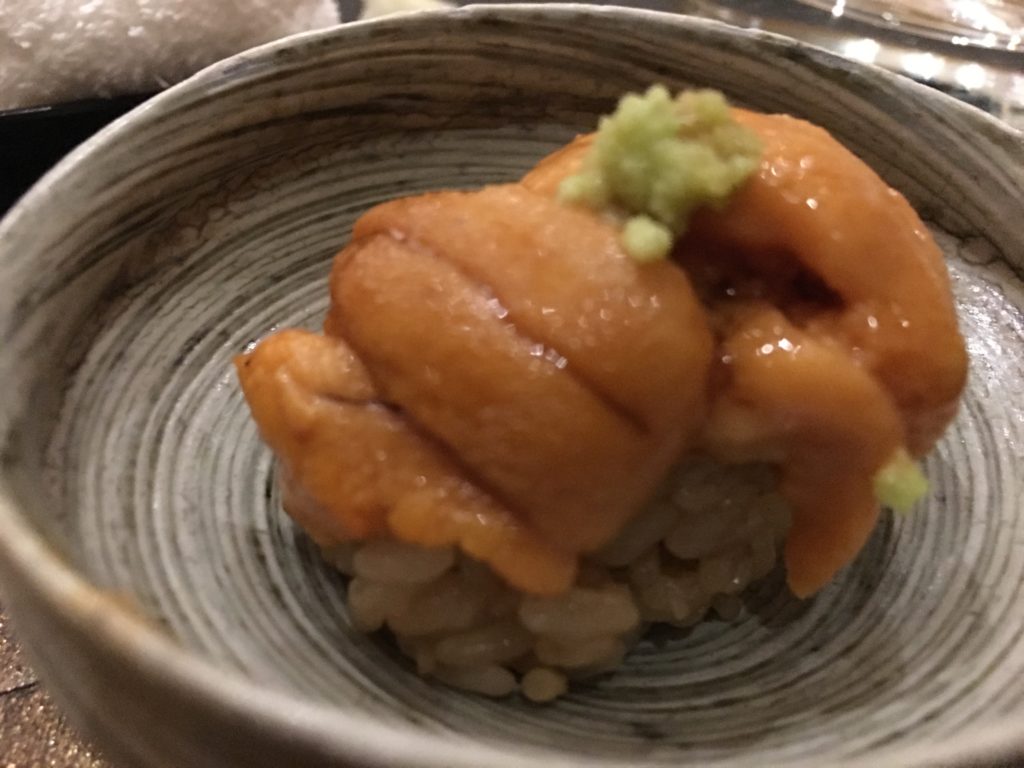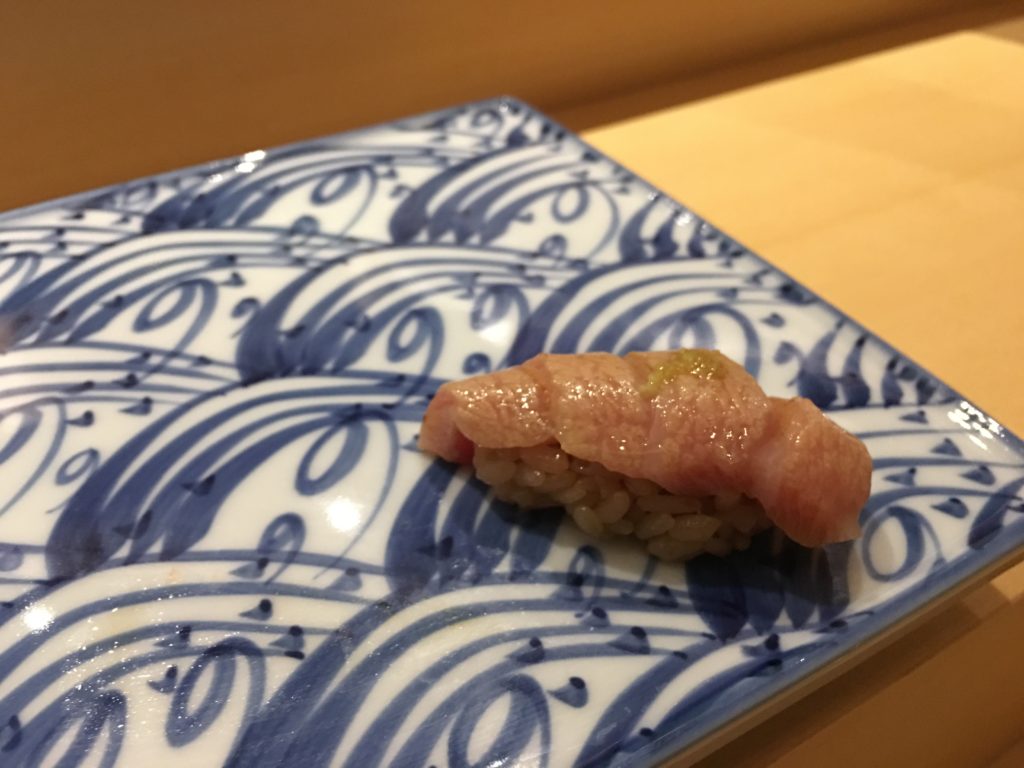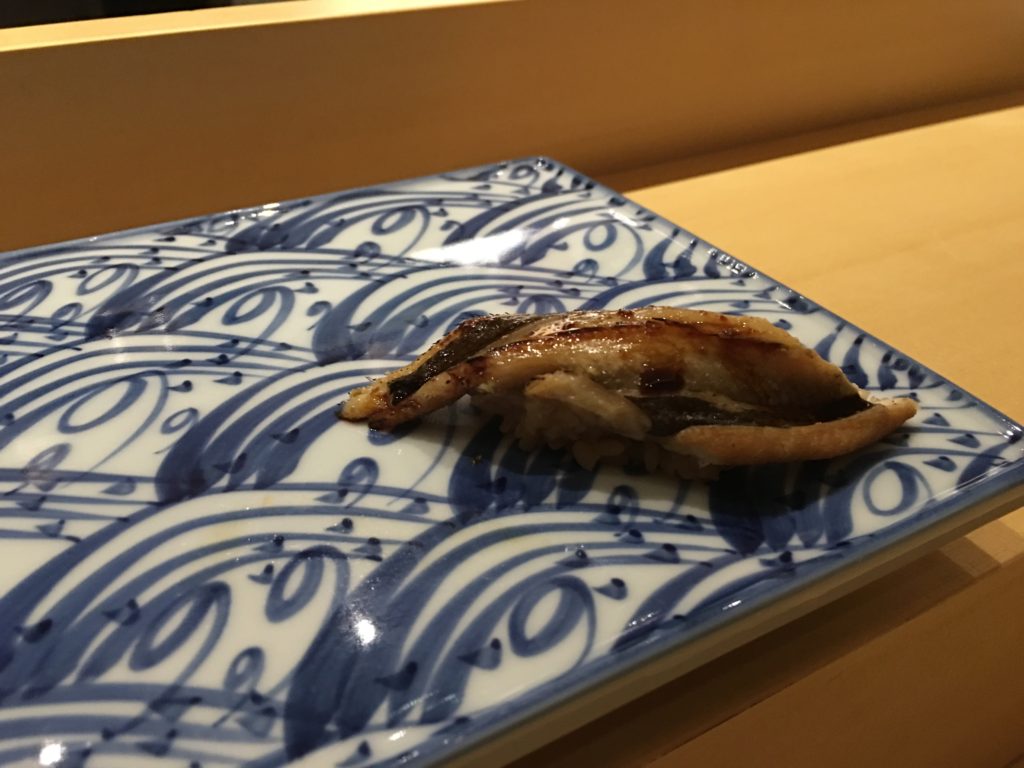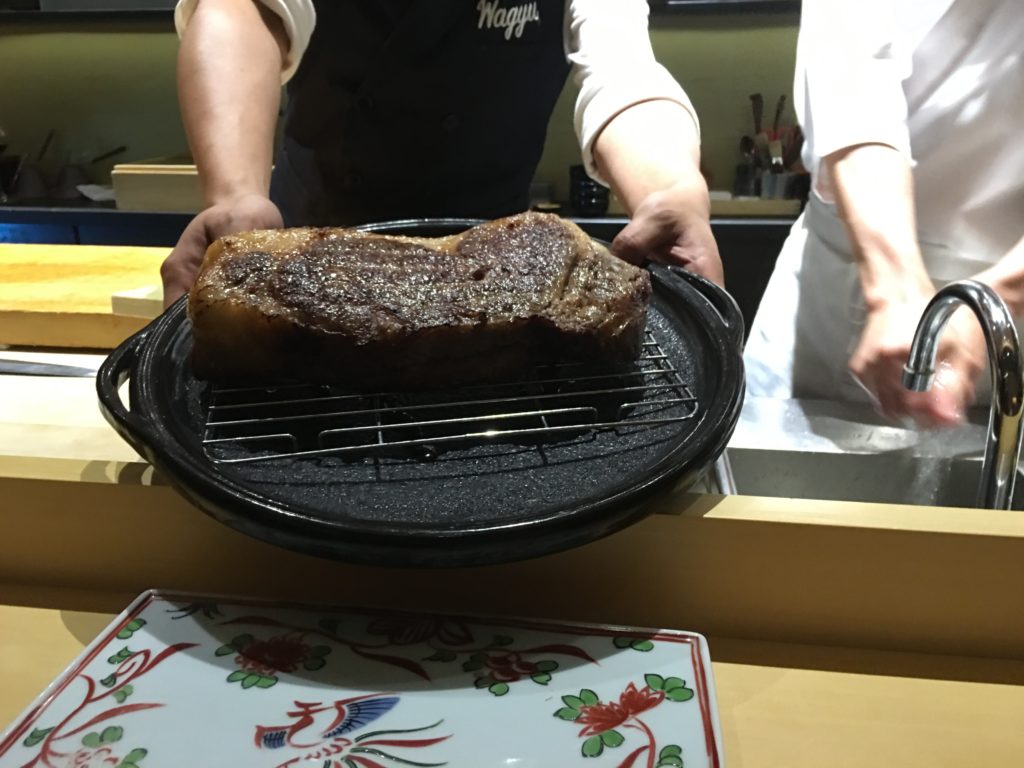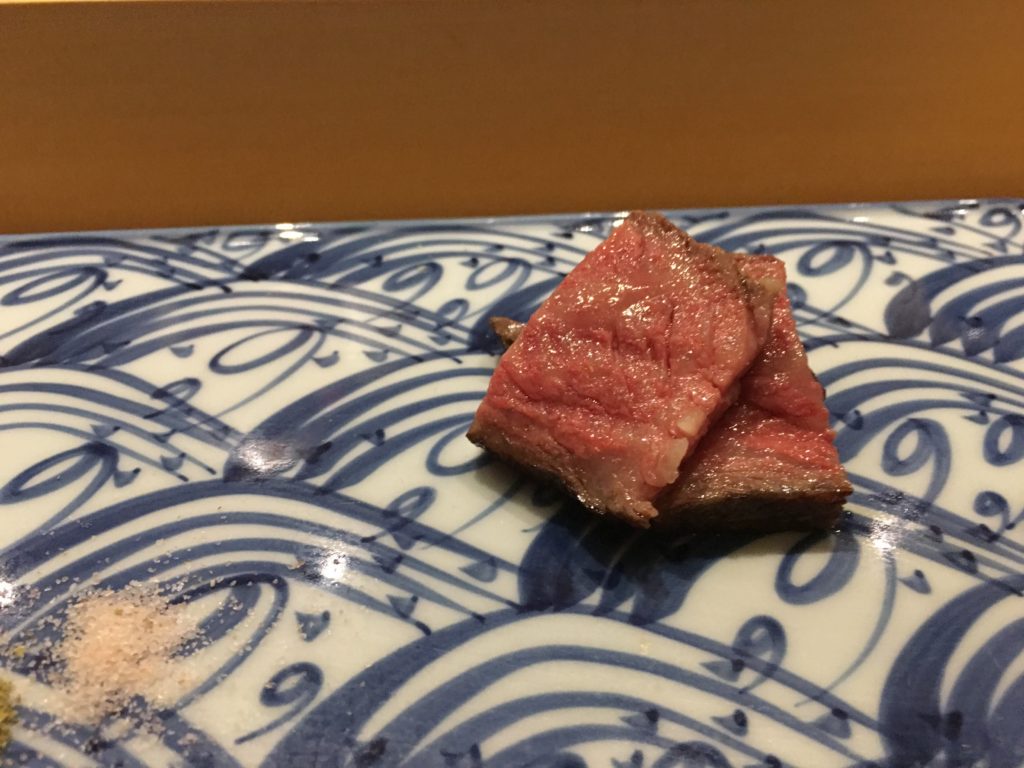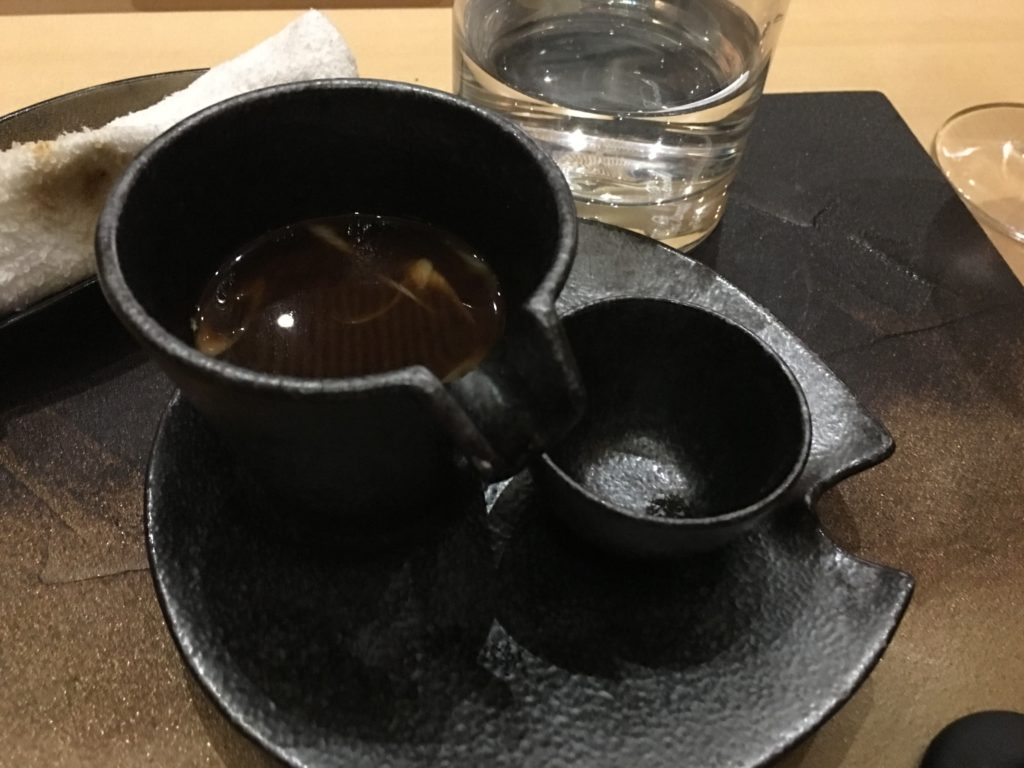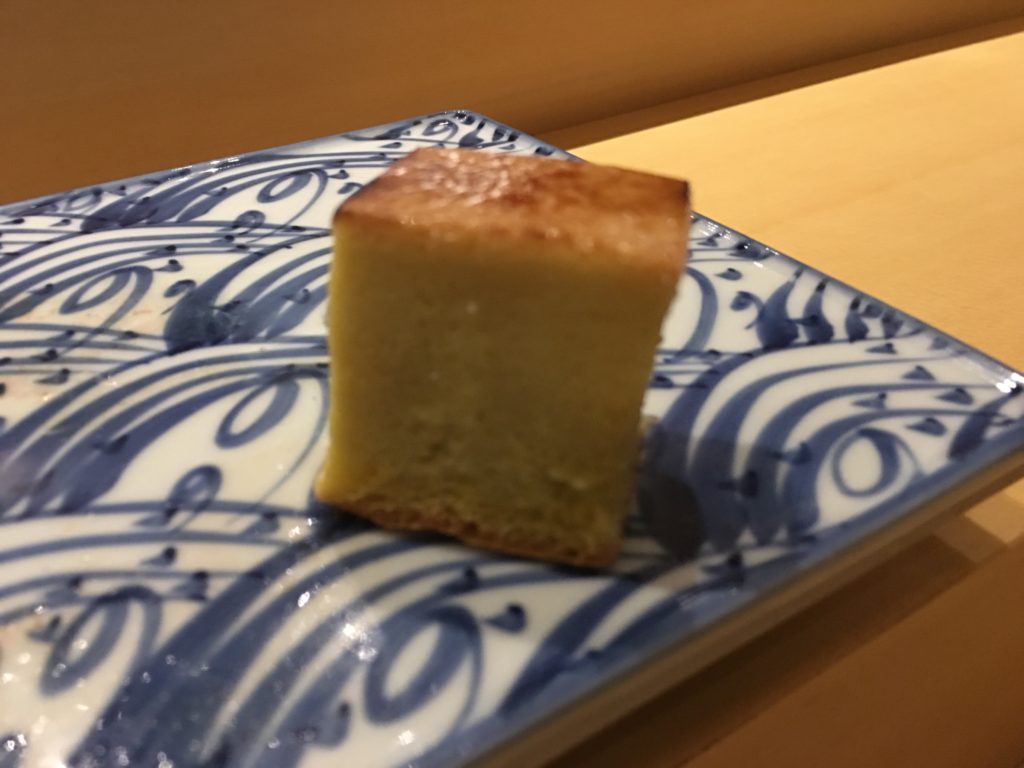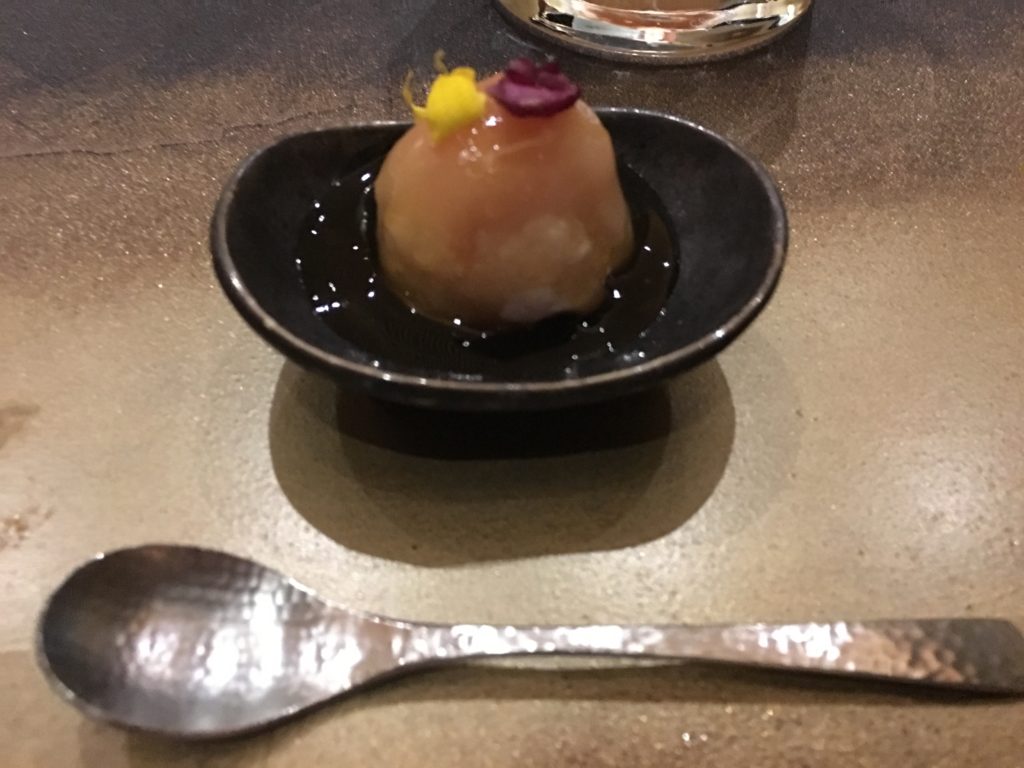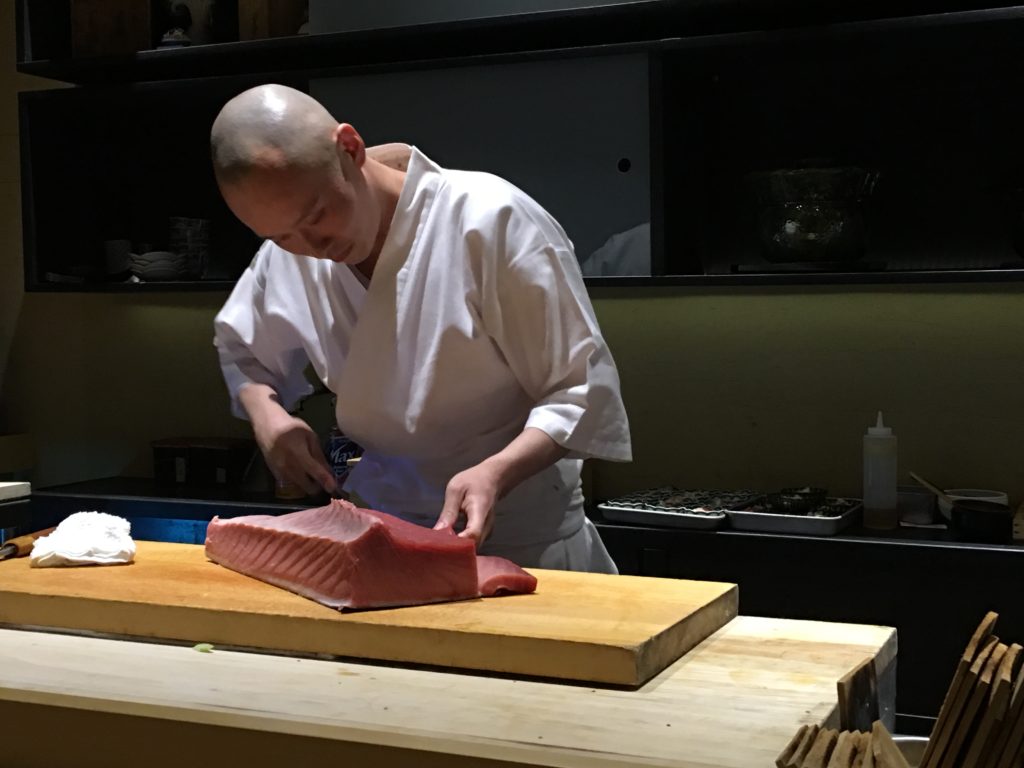
June 8th, 2016
What a treat to have scored reservations to Omakase where they were hosting guest chef Hiroyuki Sato, who owns Michelin star resturant Sushi Tokami in Ginza. This event had the added bonus of two wagyu courses and a Ruinart and Dom Perignon champagne pairing. Sushi Tokami was on my list for an upcoming trip to Japan, so I was trilled to try this sushi here in my home town.
I have been to Omakase almost a year and a half ago when they first opened and came away impressed at the time. When I read they earned a Michelin star in 2016, I thought it was well deserved and flash forwarded to the present, where despite all the fame and publicity, you could tell they did not settle and continued to improve both the food and overall dining experience. The decor and plateware seemed more polished and the service continued to be impeccable. The food obviously will be the most notable highlight as Chef Sato will have his influence and touches to complement the courses jointly created with their resident local executive Sushi Chef Jackson Yu. One highlight was the shari (sushi rice) which had the stronger aka-su (red vinegar) I prefer, as I find the taste enhances the natural flavors of the sliced fish more. Hope Omakase decides to adopt this to their regular menu.
Onto the course:
Umimasu (ocean trout) fish cake with edamame puree was a good opening course. It was beautifully presented, and he did a great job of getting the spongy yet chewy texture, in comparison to the kamaboko (fish cake) you get from the store.
Next up was tomato tartar with house made tofu and yuzu micro-greens. It was a nice way to open the palate with a tangy sweetness from the fresh tomato and creamy smoothness from the soy milk in the tofu.
Mirugai and lobster sashimi were next. Both were very fresh; with the freshness comes the crisp and natural crunchiness you can only get from almost live seafood. You could see from the lobster- the translucent color that only came from shellfish- just recently prepared. The fresh wasabi from Tsujiki enhanced the sweetness of the shellfish as it started bold and hot, soon mellowing out to a clean, refreshing green-like flavor that is a must for any high end sushi-ya.
Slightly seared Ozaki wagyu from Miyazaki prefecture with chives and a light soy, the first of two wagyu dish of the night. This was probably a top sirloin cut, as it was leaner but had a more concentrated flavor. The bite was very tender- so easy to chew and very satisfying. We learned that the Ozaki beef was sourced directly from the farmer and bore his name.
After the richness of the wagyu, lobster sunomono was another palate cleansing intermission course. The lobster claws were sweet and expertly cooked, while the slightly vinegared cucumbers set the stage for the sushi.
The main highlight of the evening was the nigiri, jointly prepared by Chef Sato and the resident sushi chefs. In particular was the trio of blue fin tuna, which Chef Sato expertly broke down in front of a live audience into the akami, chutoro, and otoro, as was highlighted in the first photo.
Hirame was a stable and a nice starter for its neutral taste, yet it had the melt-in-your-mouth consistency from the expert in house-curing techniques.
A key test of any sushi chef is Kohada, as the vinegar and salt preparations vary dramatically from season to season, due to fat content; this one ranks up there in execution. You can see from the shine and luster of the skin plus slit- how perfect the execution was, producing a delicious outcome.
Akami, the lean met of the tuna, was always the first of the three trifecta of blue fin nigiri in Ginza Sushi. The melt-in-your-mouth texture comes from probably a two day aging process; this has the side benefit of breaking down the minerally taste of this fast swimming tuna, where the blood content is higher than other fish.
Chutoro has the balance of meat to fat in harmony. The aging further enhances the melt-in-your mouth texture and flavors.
Otoro is the fattest part of the tuna. This piece in particular was the lower belly including the sinew, which needs aging to be tender. It was as if the otoro melted in your mouth- like butter.
Kuruma ebi, the Imperial Japanese Prawn. These were smaller than the ones I had in Japan two years ago in the summer, and as their peak season is in July/August. Too small to include the head for the head-fat, yet still a treat as it was very sweet and with an excellent crunchy texture.
Aji is Japanese horse mackerel with a classic negi and grated ginger preparation. The quality of the fish shines from other local sushi-ya in the bay area. The taste was special as the texture had a balanced, fat yet soft consistency and melted in the mouth.
Hamaguri is a cooked local Japanese clam that was expertly butterflied and glazed with their house tsume (reduced sweet soy sauce).
Akamatsu (aka nodoguro) is black throat perch. Amongst the white fish category, this was my favorite due to it being one of the fattest white fish available. It is sometimes more expensive than otoro pound per pound. As it’s a fatty fish, this one was prepared by the sous chef. I noticed it was only seared at the tips, as they were overlapped when torched. Although, I would have preferred an even sear of the flesh to enhance the fish with a charred taste. Was good, but know it could have been better.
Hokkado Uni- this is specifically b-high grade bafun uni- had a sweet, creamy, brinely taste that was so clean and addictive. Not a lot needed to be said except “Totemo Oishii.”
Another otoro course. This one was bold and daring, with it being seared and topped with grated garlic soy. Not traditional compared to Ginza Edomae sushi, you can sense this one is a local creation. However it works in its daringness and so very tasty.
Anago is a sea eel. They prepared this by first grilling to get a sear and then steaming to soften the fish so that the texture simply melts in your mouth. The flavor is further enhanced by the thick tsume glaze (reduced sweeten soy sauce).
A5 Kobe wagyu was quick roasted for one hour. In Tokyo, I have had Kobe A5 11 (highest being 12), which was a $450 course at Kamakura in Ginza and done teppenyaki style in front of you with a quick heat on each side. The quick sear made sense, as you do not want to have the fat rendered out completely, ending with a dry product. I was worried that the high fatty marbleization of the fat would be cooked out tonight as it was being roasted. However, they did a wonderful job gauging the timing with the thickness of the meat, showing their expert technique in the final product as can be seen in the next picture.
Three slices that were an inch and a half and served with himalayan salt, sansho pepper, and salt/pepper mix- which I quite frankly did not need to use as the meat just did not need it. Rich and packed with natural glutamates from high end wagyu, the meat was so tender- you would want to savor eat bite.
Next course was the owan dish, where we had dashi broth made from clam shells. This was perhaps the only slightly disappointing course as it was too salty, preventing any depth of flavors to be experienced.
The tamago was very good. They made it with a cake- like consistency of Ginza sushi-ya with an umami kick from what I thought, was a seafood broth. On top of this, they torched the top part to have a nice char to contrast the sweetness. It was a nice touch.
The final course was a house-made daifuku mochi with a cherry in the middle. The sauce was a kuromitsu, which was like a black molasses syrup.
Overall, the event, course selections, and progression were all top notch. The champagne pairing kept flowing with generous pours. I’m not an expert in champagne, but knowing from start to finish, we had Ruinart Blanc de Blanc, Ruinart Rose, Dom Perignon Vintage 2006, Dom Perignon Rose Vintage 2004, and lastly Dom Perignon P2 Vintage.
Too bad this was only a two night-limited event as Chef Sato was scheduled for June 8th and June 10th. The course was $380 per person. That said, I can only imagine that the meal today was a money lost for Omakaze, as when I had similar experiences in Japan at restaurants like Jiro, Harukata, Yoshitake, Ichiwa, and Kyubei all came in at around $250-$300 alone for the sushi course. They did not have wagyu nor champagne pairing in the price. In the end, I came away more impressed by Omakase’s finesse and execution of the event, and I look forward to a regular night at their resturant in the future. 5/5 stars.
